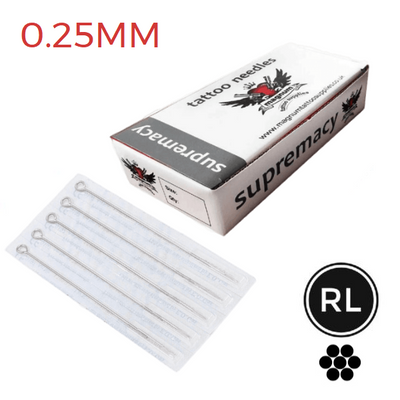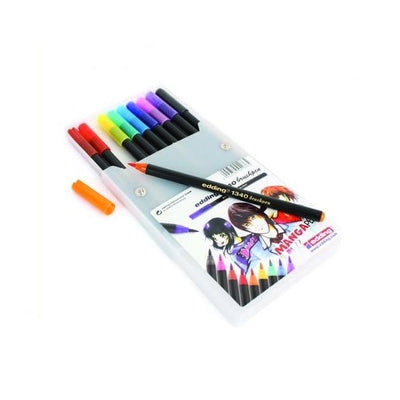Managing the pain that comes with needle piercings is a big challenge. This pain can scare away people who want tattoos but are afraid of how much it might hurt. Plus, if a client is in a lot of pain, it can make the tattooing process longer and harder and might even affect the quality of the tattoo.
To help with this, we will provide some innovative techniques for tattoo artists to make more people get tattoos without being held back by the fear of pain. This is changing the tattoo game, making it possible for everyone to enjoy getting inked with much less discomfort.

The science behind the pain during tattooing
The pain experienced during tattooing is primarily due to needles repeatedly piercing the skin rapidly to deposit ink into the dermis, the second layer of skin. This action triggers the body's pain receptors, sending signals to the brain.
Factors influencing the pain level include the tattoo's location, the individual's pain threshold, the duration of the tattoo session, and the technique of the tattoo artist. The skin's sensitivity varies across different body parts, and areas with more nerve endings or thinner skin tend to be more painful.
The least painful areas to get tattooed
- Upper arm: The muscles and thicker skin in this area can help diminish the sensation of pain.
- Forearm: Similar to the upper arm, the forearm's muscle and skin composition make it a less sensitive choice.
- Calves: The calf area, with its muscle padding and fewer nerve endings, is another option where people generally experience lower levels of pain.
- Shoulders: The shoulder area has thicker skin and muscle, which can help reduce pain perception during tattooing.
The most painful areas to get tattooed
- Ribcage: The skin over the ribs is very thin, and the lack of muscle or fat means the needle's vibrations can be felt more intensely.
- Spine: The spine area is sensitive due to the proximity to the spinal cord and the numerous nerve endings.
- Ankles and wrists: These areas have thin skin and are close to bones, making the tattooing process particularly painful.
- Neck and throat: High sensitivity due to high concentration of nerve endings and thin skin make these areas very painful to tattoo.

Tattoo pain management techniques for tattoo artists
To enhance the client's comfort, tattoo artists can employ various pain management techniques. Implementing these strategies not only improves the tattooing experience but can also help in producing higher-quality tattoos, as clients are more likely to remain still if they're in less discomfort.
1. Topical anaesthetics
Topical anaesthetics such as numbing creams or sprays can be applied to the skin before the tattooing process begins. These products usually contain lidocaine, prilocaine, benzocaine, or tetracaine, which can temporarily numb the skin surface. It's important for tattoo artists to understand the correct application and potential skin reactions.
2. Proper technique and equipment
Using the right needle size and type for the specific tattoo area and technique can minimise pain. High-quality inks and the latest tattoo machines designed to cause less trauma to the skin can also reduce discomfort.
3. Pain management through positioning
Encouraging clients to adopt comfortable positions and providing support with pillows or cushions can reduce muscle tension and pain. For longer sessions, allowing breaks where the client can stretch and relax is beneficial.
4. Breathing and relaxation techniques
Teaching clients breathing and relaxation techniques can significantly help manage pain. Deep, controlled breathing helps reduce anxiety and lowering pain perception.
5. Distraction techniques
Engaging in conversation, listening to music, or watching videos can help distract the client from the pain. Distraction can be an effective tool in reducing the focus on discomfort.
6. Aftercare advice
Proper aftercare is essential in managing pain after the tattoo session. Providing clients with detailed aftercare instructions, including keeping the tattoo clean, applying recommended lotions, and avoiding certain activities, can help minimise discomfort and promote healing. Informed advice on the signs of infection or complications can also ensure that clients seek medical advice promptly if needed.

Final thoughts
The six innovative pain management techniques in tattooing are a game-changer. These methods make getting a tattoo a lot less painful, making it easier for more people to enjoy tattoos without fear. They not only improve the experience for clients but also help artists do their best work. This progress is making tattooing more popular and accessible, showing how much the industry cares about making sure everyone has a good experience.



























































 Studio supplies
Studio supplies












 Power & batteries
Power & batteries








 Aftercare
Aftercare





















 Apprentice
Apprentice


 Piercing & jewellery
Piercing & jewellery







 PMU supplies
PMU supplies




 New arrivals
New arrivals
 Gift vouchers
Gift vouchers
 Shop all
Shop all















































